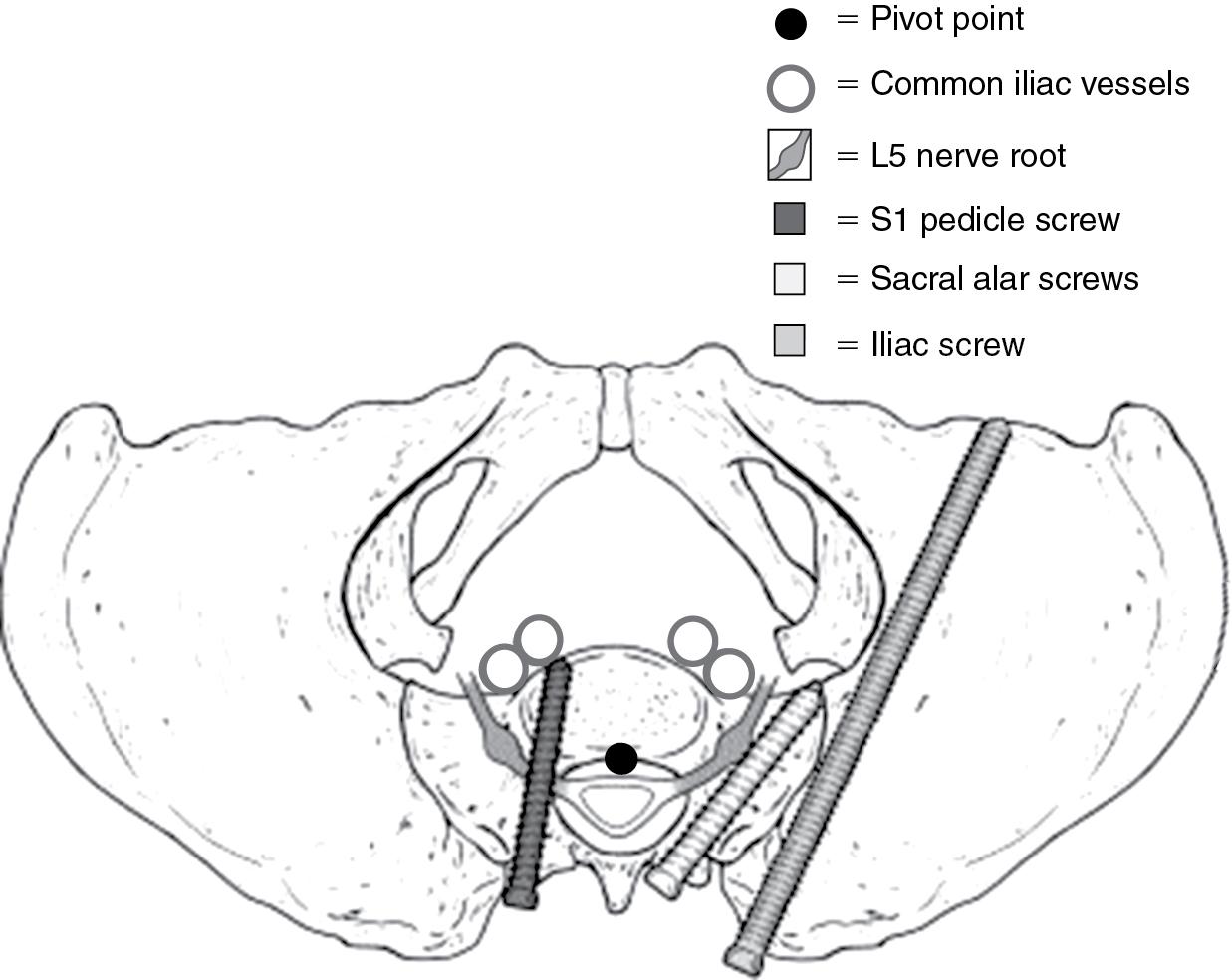Physical Address
304 North Cardinal St.
Dorchester Center, MA 02124
The lumbosacral junction consists of the L5 vertebra, the sacrum, and the articulations between both segments, consisting of the anteriorly located L5–S1 disc and posteriorly located L5–S1 facet joints. It also includes the ligamentous and muscular structures supporting this important motion segment.
It is the transition between the mobile lumbar spine and the pelvic girdle, which has the main function of transferring the weight from the axial skeleton to the lower appendicular skeleton.
Substantial biomechanical forces are concentrated at the lumbosacral junction. If fusion is extended to this area, there is a strong lever arm that transmits flexion, extension, and torsional forces from the spine above. These forces cause significant strain that increase the risk of fixation failure and pseudarthrosis.
McCord et al ( ) introduced the concept of the lumbosacral pivot point, which is defined as the middle of the osteoligamentous column at the junction between L5 and S1. The farther that sacropelvic instrumentation progresses anterior to this point, the more stable the construct. Iliac fixation techniques, including traditional iliac screws and S2 alar-iliac (S2AI) screws, provide the most stable method of achieving sacropelvic fixation because they extend fixation for a greater distance anterior to the lumbosacral pivot point than other techniques. S1 screws provide the least resistance to flexion moments compared with other sacropelvic fixation techniques. The addition of a second point of sacral fixation provides improved fixation compared to use of S1 pedicle fixation alone ( Fig. 30.1 ).

Degenerative disorders involving the L5–S1 level
Adult idiopathic or de novo scoliosis
Neuromuscular spinal deformities especially when associated with pelvic obliquity
L5–S1 spondylolisthesis
Infections and tumors requiring lumbosacral spinal reconstruction
Fractures involving the lumbosacral junction
Revision spinal procedures, especially when significant sagittal and/or coronal correction is required in the lower lumbar or lumbosacral spine
Pseudarthrosis
Loss of lumbar lordosis resulting in sagittal imbalance (flatback syndrome)
Recurrent or progressive spinal deformity
Instrumentation loosening or failure
Sacroiliac joint pain or arthrosis
Sacral stress fractures
An unfavorable biomechanical environment exists here because the lumbosacral junction is a transition zone between the highly mobile L5–S1 disc and the relatively immobile sacropelvis.
Tremendous loads are transferred across the lumbosacral junction (up to 11 times body weight) as axial weight-bearing forces are transmitted from the vertebral column to the pelvis.
The oblique orientation of the L5–S1 disc results in increased shear forces across this level.
The sacrum is mostly cancellous bone, which provides suboptimal fixation.
The large diameter and relatively short S1 pedicles provide less secure screw purchase compared with proximal vertebral levels.
Biomechanical studies of the lumbosacral region have demonstrated that approximately 80% of axial load is transmitted through the anterior spinal column and the remaining 20% is transmitted through the posterior column. Spinal fusion and instrumentation procedures that do not restore the anterior column load-sharing property across the lumbosacral junction are destined for failure.
Long-segment fusion constructs (i.e., more than four levels) that include the sacrum, especially those that cross the thoracolumbar junction, have a higher rate of failure than short-segment constructs (i.e., L4–S1). Because of the longer lever arm exerted by the proximal spine on the distal sacral instrumentation, the forces placed on the distal sacral fixation are increased. The degree of strain on the S1 screws increases as the number of segments immobilized above the sacrum increases. These biomechanical factors increase the risk of distal fixation failure.
Become a Clinical Tree membership for Full access and enjoy Unlimited articles
If you are a member. Log in here